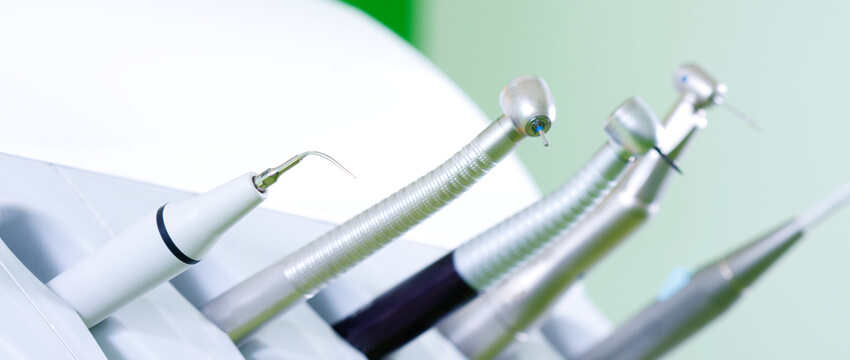
Dental handpieces are vital tools used by dental professionals for various procedures, including drilling, polishing, and removing decayed tooth material. Proper care and maintenance of dental handpieces are crucial to ensure their longevity, optimal performance, and to prevent cross-contamination between patients. This guide provides an overview of the guidelines for the proper care of dental handpieces.
Follow Manufacturer’s Instructions:
Always refer to the manufacturer’s instructions for specific guidelines on maintenance and sterilization procedures for your particular handpiece model. Manufacturers typically provide detailed instructions and recommendations tailored to their specific products.
Pre-Cleaning:
After each use, it is essential to perform a pre-cleaning procedure on the handpiece. This involves removing any visible debris, such as blood, saliva, or other contaminants. Use a mild detergent or enzymatic cleaner and a soft brush to clean the external surfaces and the chuck area of the handpiece. Avoid immersing the handpiece in water or cleaning solutions to prevent damage to the internal components.
Lubrication:
Proper lubrication is vital for maintaining the smooth operation of dental handpieces. Use a high-quality handpiece lubricant recommended by the manufacturer. Follow the instructions provided to ensure the correct amount and method of lubrication. Typically, a few drops of lubricant are applied into the air/water channels and the handpiece’s drive air inlet.
Sterilization:
Dental handpieces must be sterilized between patients to prevent the transmission of infectious diseases. Most handpieces are autoclavable, meaning they can be sterilized using steam under high pressure. Before autoclaving, ensure that the handpiece is thoroughly dried and free of any excess lubricant. Follow the manufacturer’s recommendations for the appropriate autoclave settings and duration to avoid damaging the handpiece.
Handpiece Flushing:
Flushing the handpiece is essential to remove any residual debris, lubricant, or sterilization agents that may be present after the sterilization process. Connect the handpiece to a clean water source and activate the air and water flow simultaneously for several seconds to flush out any remaining contaminants.
Storage:
Proper storage of dental handpieces is crucial to prevent damage and maintain their functionality. After cleaning, lubrication, and flushing, store the handpieces in a designated, clean, and dry area. Avoid storing them in an environment where they may be exposed to excessive heat, moisture, or chemicals.
Regular Maintenance:
Dental handpieces should undergo regular maintenance and servicing as recommended by the manufacturer. This typically involves periodic inspections, cleaning, lubrication, and replacement of worn or damaged components. It is advisable to establish a maintenance schedule and keep a record of all maintenance activities performed on each handpiece.
Training and Education:
Ensure that all dental professionals who handle handpieces are properly trained on their correct usage, maintenance, and sterilization procedures. Stay updated with the latest guidelines, best practices, and advancements in handpiece care by attending relevant workshops, seminars, or webinars.
Inspection and Troubleshooting:
Before each use, visually inspect the handpiece for any signs of damage, such as cracks, frayed or damaged cords, or loose parts. If any issues are detected, do not use the handpiece and have it repaired by a qualified technician. Additionally, troubleshoot any performance issues promptly to identify and address potential problems.
Avoid Excessive Heat:
Dental handpieces can be sensitive to heat. Avoid exposing them to excessive heat sources such as direct sunlight, hot instruments, or heat sterilization cycles that exceed the manufacturer’s recommendations. High temperatures can lead to damage to the handpiece’s internal components and decrease its lifespan.
Use of Protective Barriers:
Consider using disposable or autoclavable barrier sleeves or wraps to cover the handpiece during procedures. These barriers help prevent cross-contamination and reduce the need for extensive cleaning between patients. Make sure to follow the manufacturer’s instructions for the use and disposal of these protective barriers.
Quality Water and Air Sources:
Ensure that the dental unit’s water supply and air source are clean and free from contaminants. Contaminated water or air can affect the performance and longevity of the handpiece. Regularly monitor and maintain the waterlines and filters in the dental unit according to the manufacturer’s guidelines.
Handling and Transport:
When handling or transporting dental handpieces, take care to avoid dropping or subjecting them to impact. Use protective cases or covers designed for handpiece storage during transport to prevent damage.
Professional Servicing:
Periodically, it is advisable to send the handpieces to a qualified repair and maintenance facility for professional servicing. These facilities have specialized tools and expertise to disassemble, clean, lubricate, and inspect the handpieces thoroughly. Professional servicing can help identify and address potential issues that may not be apparent during routine maintenance.
Record Keeping:
Maintain a detailed record of each handpiece, including its model, serial number, maintenance history, and any repairs or servicing performed. This record will help track the lifespan of the handpiece, schedule regular maintenance, and identify patterns of issues or concerns.
Remember, the proper care and maintenance of dental handpieces not only ensure their longevity and optimal performance but also contribute to the overall safety and well-being of patients. Following these additional points will help you maintain your dental handpieces in excellent condition and minimize the risk of equipment failure or cross-contamination.